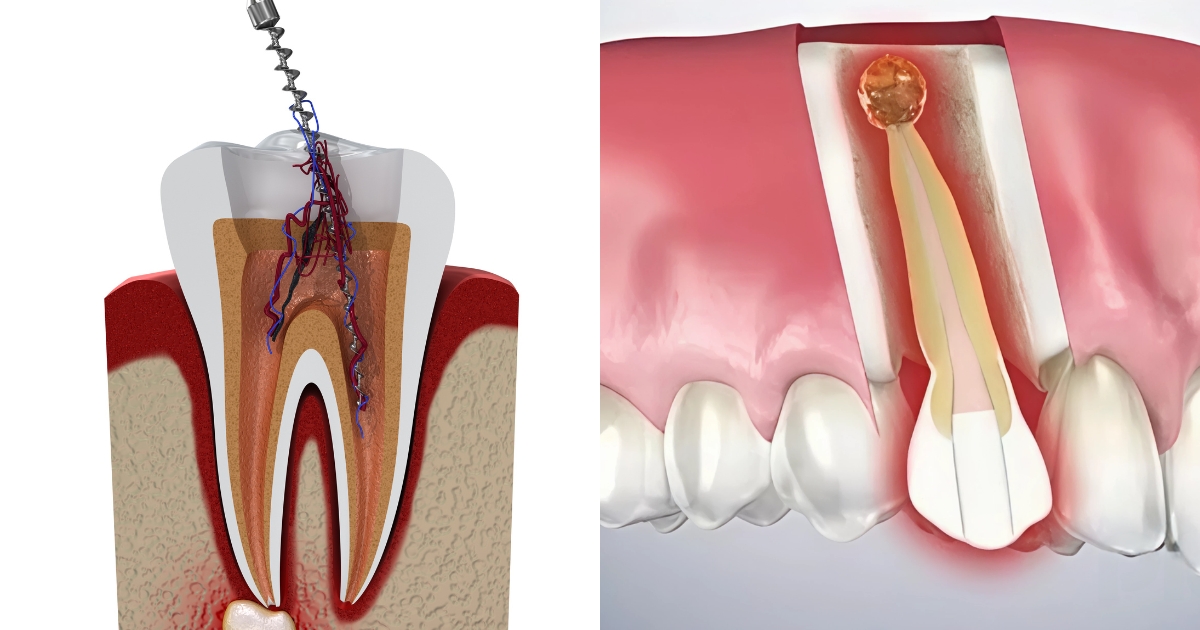Call Us Today 817-737-7668

Tooth pain doesn’t always come knocking politely. One day, you’re sipping iced tea without a care, and the next moment, you’re quivering in throbbing molar pain like it has a heartbeat of its own. Most folks think it ends with a root canal.
While root canal treatment is often the go-to solution, some situations need extensive solutions. That’s where an apicoectomy steps into the picture.
And here’s the twist: many patients have no idea there’s a difference between the two. Even fewer know that sometimes, after what seemed like a successful root canal, an infection can flare up again. That’s when dental professionals might suggest something called an apicoectomy. It’s a foolproof way to save your tooth.
Let’s cut through the noise and get to what matters: how each procedure works, what makes them different, and how to know if your tooth’s telling you it needs more than just a surface-level fix.
Root Canal Treatment
Before diving into surgical terms, let’s start with the basics. Root canal treatment is like the dental equivalent of rescuing a sinking ship. It removes infected pulp, cleans out the root canals, and seals the tooth to keep bacteria from storming back in.
What root canal treatment involves:
- Cleaning out the infected or inflamed pulp
- Shaping and disinfecting the root canals
- Filling the cleaned canals with a biocompatible material (often gutta-percha)
- Restoring the tooth with a crown for structural integrity
It’s minimally invasive and preserves the tooth without touching the surrounding bone or gum tissue. Most root canals work beautifully. But occasionally, that infection burrows in deeper, below the root tip. And that’s when you might start Googling: Signs you need an apicoectomy after a root canal.
Apicoectomy: When the Infection Gets Sneaky
If a root canal is about cleaning from the inside, an apicoectomy is all about fixing issues from the outside. It’s a minor surgical procedure that targets the root’s very tip—called the apex—especially if infection lingers or returns after a root canal.
Why patients may need an apicoectomy:
- Persistent infection or cysts at the root tip
- Narrow or curved canals that couldn’t be fully cleaned
- A fractured root tip or calcified canals
- Recurrent symptoms like swelling, tenderness, or drainage
During an apicoectomy, your dental surgeon lifts the gum tissue near the affected tooth, removes the infected tip of the root, and seals the end with a small filling. It’s often the last resort to save a natural tooth before extraction becomes the only option.
Apicoectomy vs. Root Canal: What’s the Real Difference?
Both procedures aim to save the tooth, but their techniques, access points, and purposes differ.
| Feature | Root Canal Treatment | Apicoectomy |
| Procedure Type | Non-surgical | Surgical |
| Access Point | Through the crown of the tooth | Through the gum to reach the root tip |
| Goal | Remove infected pulp and seal canals | Remove infected tissue at the root tip |
| Used When | Initial infection is within the canal | Infection persists after a root canal |
| Recovery Time | 1-2 weeks | 3-6 months |
If you’ve already had a root canal and discomfort returns weeks or months later, don’t panic—but don’t ignore it, either. A timely visit to your dentist can help you avoid more complicated treatments later.
How to Know Which One You Need?
Here’s the deal: Most people can’t self-diagnose whether they need a root canal or an apicoectomy. But certain symptoms send strong signals.
Common symptoms that point toward deeper trouble:
- Throbbing pain despite prior root canal treatment
- Swelling or recurring pimple-like bumps on your gums
- Sensitivity to pressure or touch long after healing
- Imaging that shows bone loss near the root tip
- Drainage or sinus-like symptoms around the tooth
If you’re in the Forney area and experiencing any of the above, schedule an exam quickly. The longer the infection lingers, the more complicated treatment can become.
Why You Should Not Delay Treatment?
Waiting to treat a lingering infection is like ignoring a cracked windshield—it only spreads. Delaying intervention can cause:
- Spread of infection to nearby teeth or jawbone
- Loss of the tooth entirely
- Chronic pain or discomfort that affects daily life
- More invasive and costly treatments later
Getting prompt root canal treatment or, if needed, an apicoectomy, helps protect the structure of your smile and avoids complex restoration down the road. It’s not just about pain relief—it’s about keeping your natural teeth functioning for years to come.
Root Canal or Apicoectomy: A Conversation Worth Having
Let’s say you’ve already undergone a root canal. Months later, that tooth starts acting up again. Instead of jumping to conclusions, talk to your dentist about the next steps. It might not mean failure—it might just mean you need a different kind of solution.
Modern imaging, like digital X-rays or cone beam CT scans, helps identify whether the issue lies within the canal or at the tip of the root. The key is early detection and precise action.
Whether it’s your first sign of infection or you’re seeing signs you need an apicoectomy, one thing’s for sure—ignoring symptoms never ends well.
Tooth pain doesn’t have to control your day—or your future dental decisions. If you’re dealing with persistent symptoms after a root canal or you’re unsure which path to take, we’re here to help.
Let’s figure it out together.
Our dental team offers advanced diagnostics and minimally invasive solutions tailored to your unique case. Whether you need root canal treatment or are showing signs you need an apicoectomy post-root canal, we’ll guide you every step of the way.
Schedule your consultation today for a long-lasting, pain-free smile.



